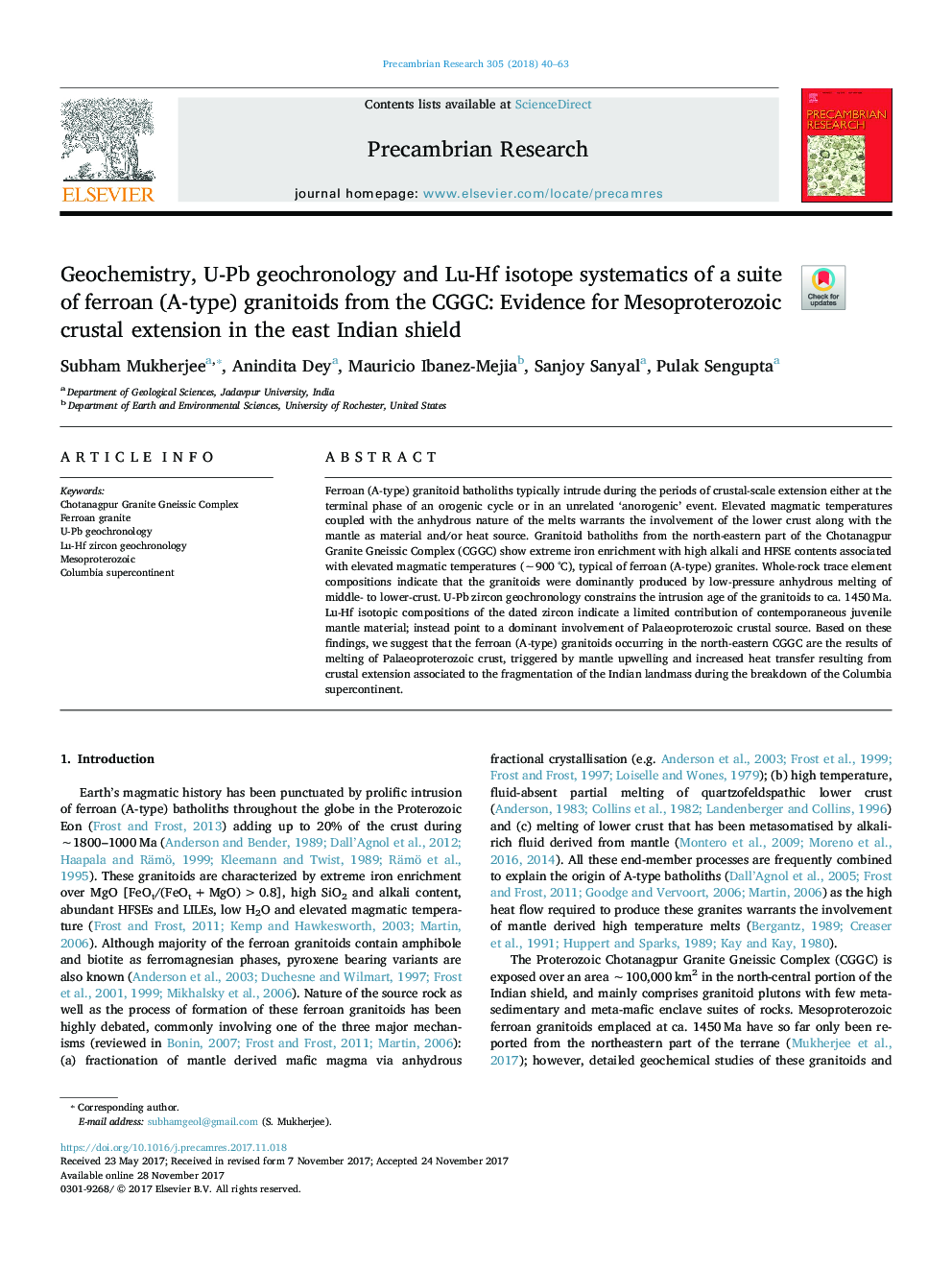| Article ID | Journal | Published Year | Pages | File Type |
|---|---|---|---|---|
| 8912653 | Precambrian Research | 2018 | 24 Pages |
Abstract
Ferroan (A-type) granitoid batholiths typically intrude during the periods of crustal-scale extension either at the terminal phase of an orogenic cycle or in an unrelated 'anorogenic' event. Elevated magmatic temperatures coupled with the anhydrous nature of the melts warrants the involvement of the lower crust along with the mantle as material and/or heat source. Granitoid batholiths from the north-eastern part of the Chotanagpur Granite Gneissic Complex (CGGC) show extreme iron enrichment with high alkali and HFSE contents associated with elevated magmatic temperatures (â¼900â¯Â°C), typical of ferroan (A-type) granites. Whole-rock trace element compositions indicate that the granitoids were dominantly produced by low-pressure anhydrous melting of middle- to lower-crust. U-Pb zircon geochronology constrains the intrusion age of the granitoids to ca. 1450â¯Ma. Lu-Hf isotopic compositions of the dated zircon indicate a limited contribution of contemporaneous juvenile mantle material; instead point to a dominant involvement of Palaeoproterozoic crustal source. Based on these findings, we suggest that the ferroan (A-type) granitoids occurring in the north-eastern CGGC are the results of melting of Palaeoproterozoic crust, triggered by mantle upwelling and increased heat transfer resulting from crustal extension associated to the fragmentation of the Indian landmass during the breakdown of the Columbia supercontinent.
Related Topics
Physical Sciences and Engineering
Earth and Planetary Sciences
Geochemistry and Petrology
Authors
Subham Mukherjee, Anindita Dey, Mauricio Ibanez-Mejia, Sanjoy Sanyal, Pulak Sengupta,
